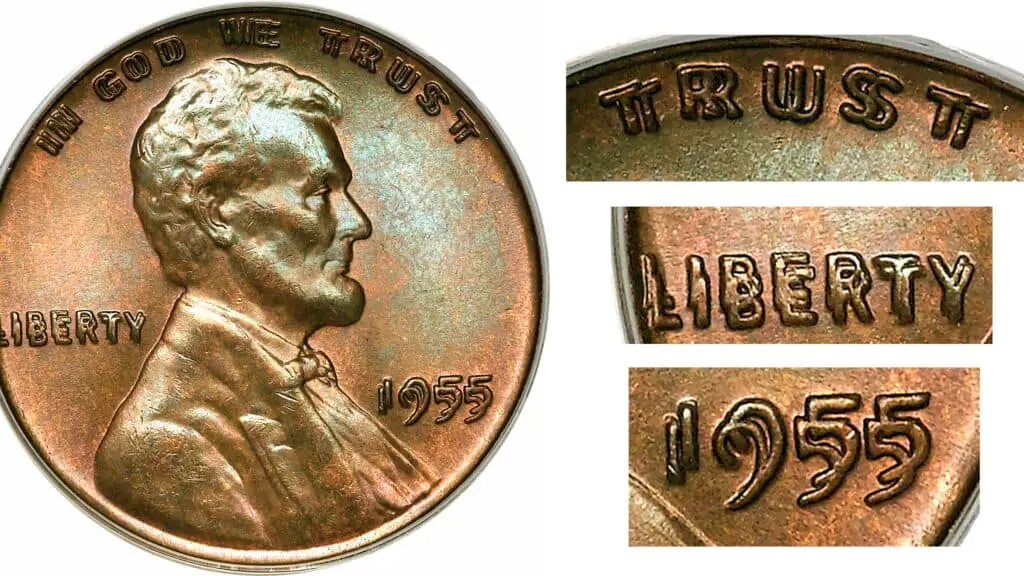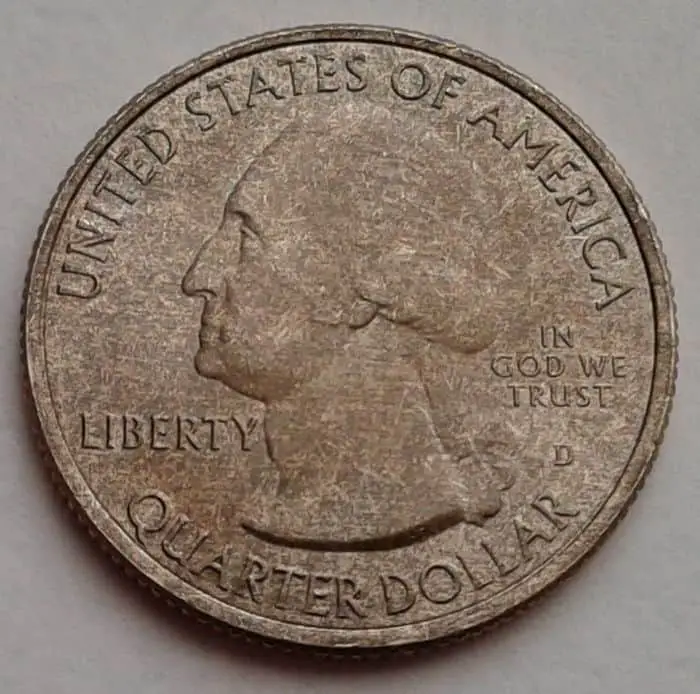Coin errors are a fascinating category of coins. While some aspects of coin production can be predictable, there are many reasons that coins may wind up with unique characteristics that make them stand out from their peers.
Whether it’s the result of human error or natural phenomena, these interesting mistakes only add to the allure and history of coins.
What are the Different Types of Coin Errors:
Broadstrike

Broadstrike coins are those that have been struck with a die that is not centered.
This error causes the coin’s obverse and reverse design to be off-center. Usually, the design is not centered in both directions, although there are exceptions.
Sometimes, we may observe that the design is only partially off-centered on one side or the other, also known as half broadstrike.
Capped Die

So, the next one we have is a capped die, essentially a coin struck by a die that wasn’t capped properly.
The cap, my friends, is that metal piece the Mint places on top of the die to protect it during the minting process.
At this juncture, one does not need to strike the complete coin with the capped die to qualify it as a capped die error.
Clipped Planchet

So, a clipped planchet is essentially a coin that’s been struck from a planchet that wasn’t shaped properly, resulting in it being smaller than it should be.
So what we have here is a coin that’s smaller than usual, and the edges are rough.
Furthermore, there are instances where coins that have been clipped will exhibit an additional rim on one side due to being cut too short or not being trimmed correctly.
Die Cap

So, a die cap is a raised piece of metal visible on the coin or planchet. A die cap can be a raised piece of metal or a depression.
These objects frequently resemble tiny coins, but they are not authentic currency.
These are simply errors resulting from the pressure exerted when two dies are struck together with such force that they push the metal above each die, leaving an imprint on both sides.
Die Clash

So, what happens is that when the blank dies used to strike coins come together, a die clash occurs.
This means the resulting coin will have two images, one from each side of the die. Sometimes they can be very subtle, but sometimes they are very obvious.
If you have one loose die and one fixed die, or if both die are loose and come together at just the right point in their rotation, a die clash can occur.
Sometimes, this random event can strike multiple coins (although it’s probable that only one will make it through). The easiest way to identify if your coin has been clashed is by checking for doubling.
Die Crack

So, when we talk about a die crack, we’re referring to a break in the die.
A stress fracture in the metal causes it, which can be triggered by improper annealing or too much pressure.
Improper striking can cause die cracks, where the coin is struck on the die’s edge instead of properly struck with no overlapping portions.
Die Cud

A die cud is when the die gets damaged and causes an error on the coin.
A foreign object caught in the die or improper striking can cause damage. If a coin has a die cud, then one side of the coin will have a raised area.
Die Deterioration

When the metal in the die starts to deteriorate, it results in a coin error known as die deterioration.
So what happens is that the metal in the die might get pitted or corroded, which can lead to a coin being struck with a weak or no impression.
If you’re wondering how this happens, just remember that dies are subject to wear and tear over time.
If you keep using the die made of metal, it will get thinner over time. Then, even a small touch with any other object can break it apart and harm your coins!
Double Denomination

One of the most common types of coin errors is when you have two different denominations on one side of the coin.
So what happens is that when two dies come together and create an off-center strike, a die clash can cause these.
If you look closely, you might notice that this error can occur on your coins.
The wrong denomination may have been stamped into the metal when it was struck against a die that had already been used to make another coin with different denominations.
Double Strike

Another error that can occur is when you double strike a key. If you know what to look for, a coin with two strikes will look slightly different than a normal coin.
One can identify a double-struck coin by examining its design. If you notice that one side seems to be duplicated or replicated, it is probable that it has been hit twice and falls under this classification.
I’d like to mention that double strike errors may occur on both sides of coins, including the front and back, as well as on the edge lettering or other features around the rim of the coin.
However, it’s worth noting that these errors are not as noticeable as those in design areas like heads and tails. This is because there are numerous possibilities for errors to occur in these areas.
Filled Die

So, what happens is that when metal flows into the design, a filled die occurs. This can occur if the press operator gets distracted and leaves the dies open for too long or if a coin blank of incorrect size passes between the dies and fills in a portion of the design.
You know, filled die varieties have been around for quite some time. They date back to ancient history.
However, during colonial times, they became more prevalent due to mass production.
Improperly Annealed Planchet

When a coin is made, specific temperatures and pressures must be met for the metal to be properly formed.
The resulting product may have been improperly annealed if these conditions are not met.
This means that two different types of metal were used in making a coin or part of a coin, creating an uneven surface and potentially causing weakness in parts of the metal.
A soft spot on the edge can also be caused by improper annealing or mixing metals during production.
Indent Errors

The most common type of coin error is the indent error. This error happens when a piece of metal is pressed into the coin, usually by accident.
The indentation can be found on both sides of the coin and either side of its rim, making it hard to spot at first glance.
Lamination Errors

A lamination error results from a coin being struck on an improperly prepared die, which can cause a thin piece of metal to be added to the surface.
This thin metal will appear as a small section on the coin lighter in color than surrounding areas and may even have raised edges.
This type of error will often appear near an edge or inscription, but it can occur anywhere on a coin’s design.
Lamination errors are often caused by improper polishing before plating, exposing raw steel beneath the surface.
They can also happen when coins are overpolished after production (accidentally or on purpose).
In addition, coins struck with improperly polished dies are more susceptible to lamination errors because they do not have enough presence underneath their designs to strike pressure to spread them properly during coining operations.
Before you go…
In conclusion, the list of coin errors can be extensive. However, we hope you have learned some new facts about these coins and how they happen by reading this article. Coin collectors are always on the lookout for these rare pieces so that they can add them to their collections!
Check out my next article: “What are RPM Coins?“
Related Articles:

